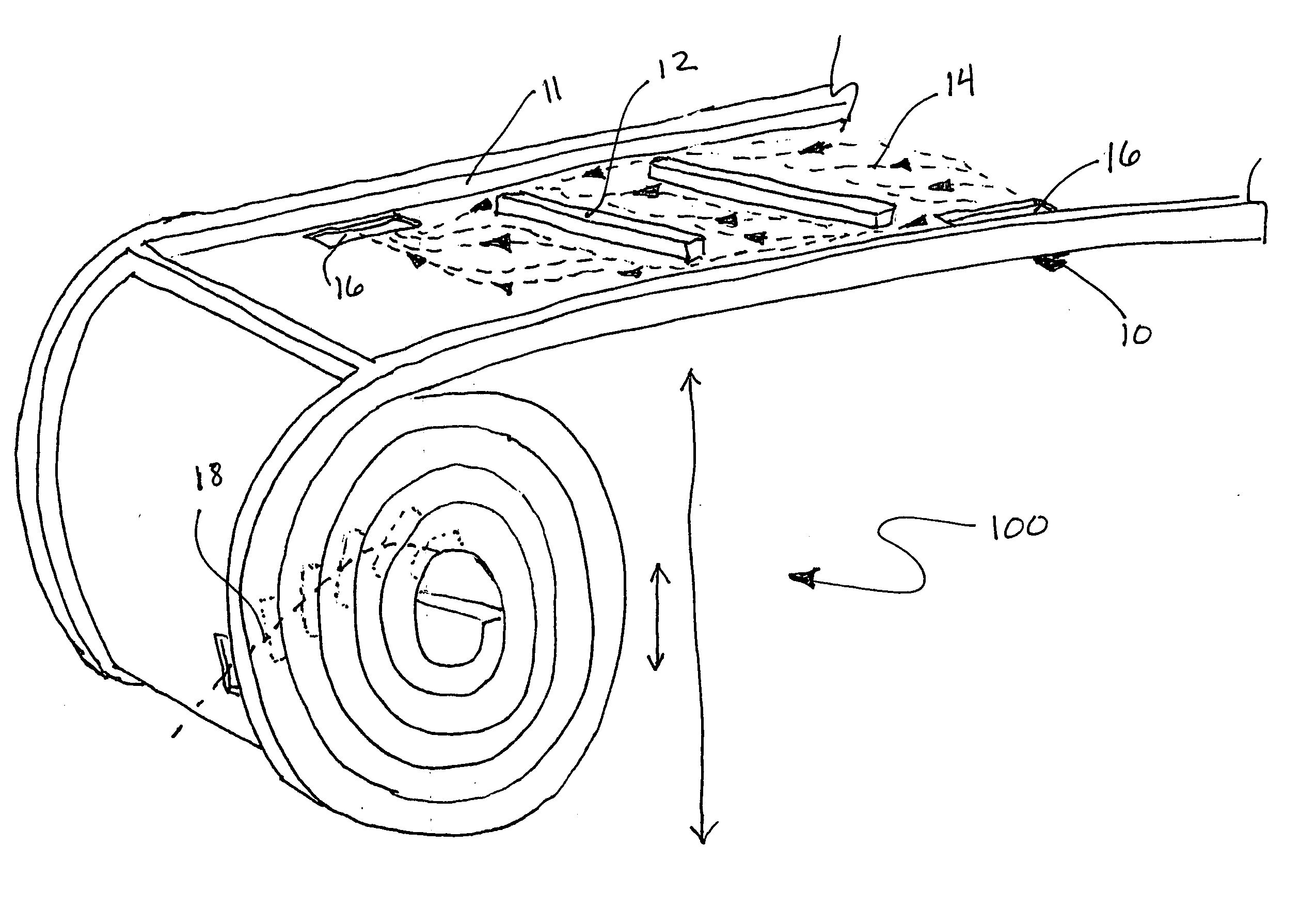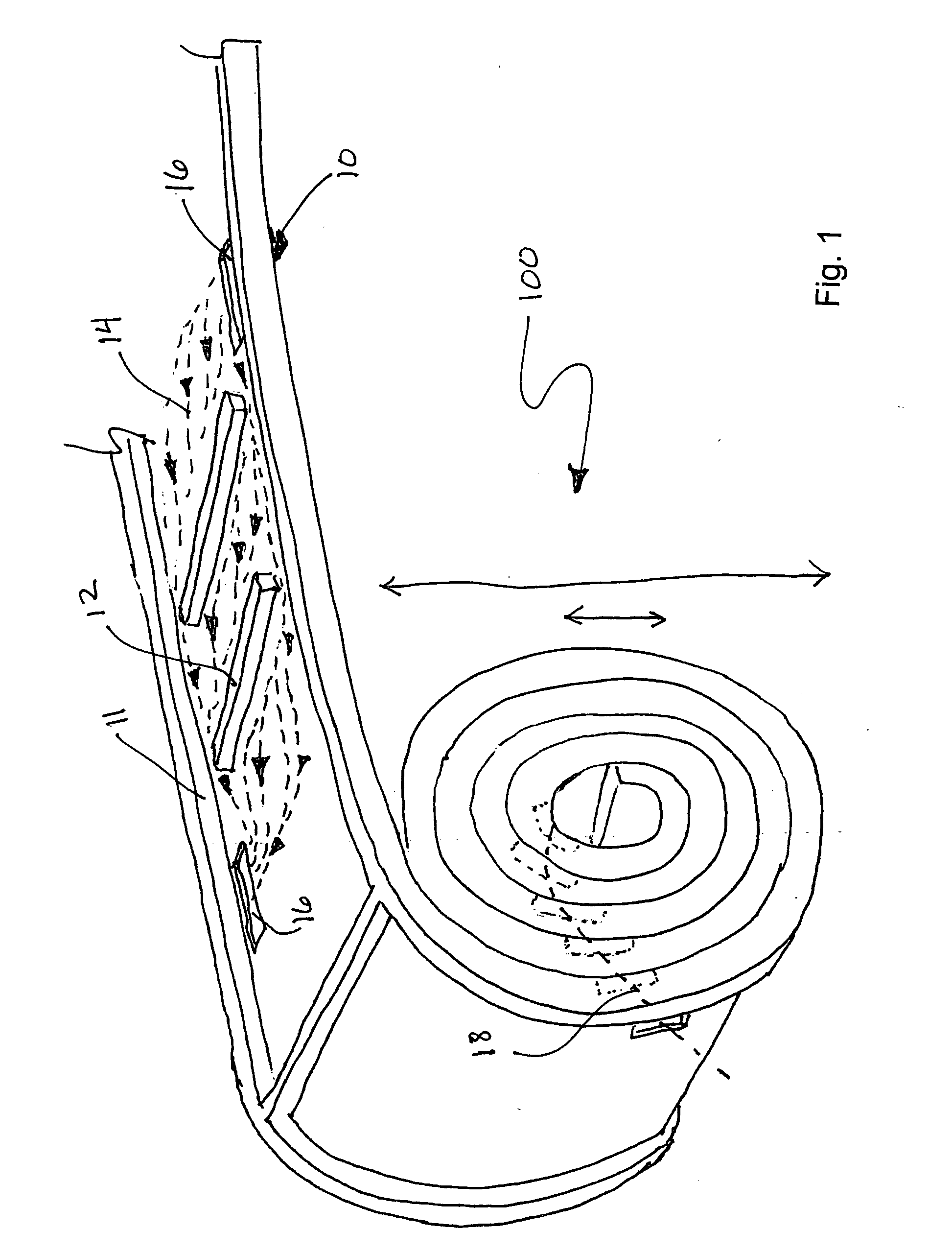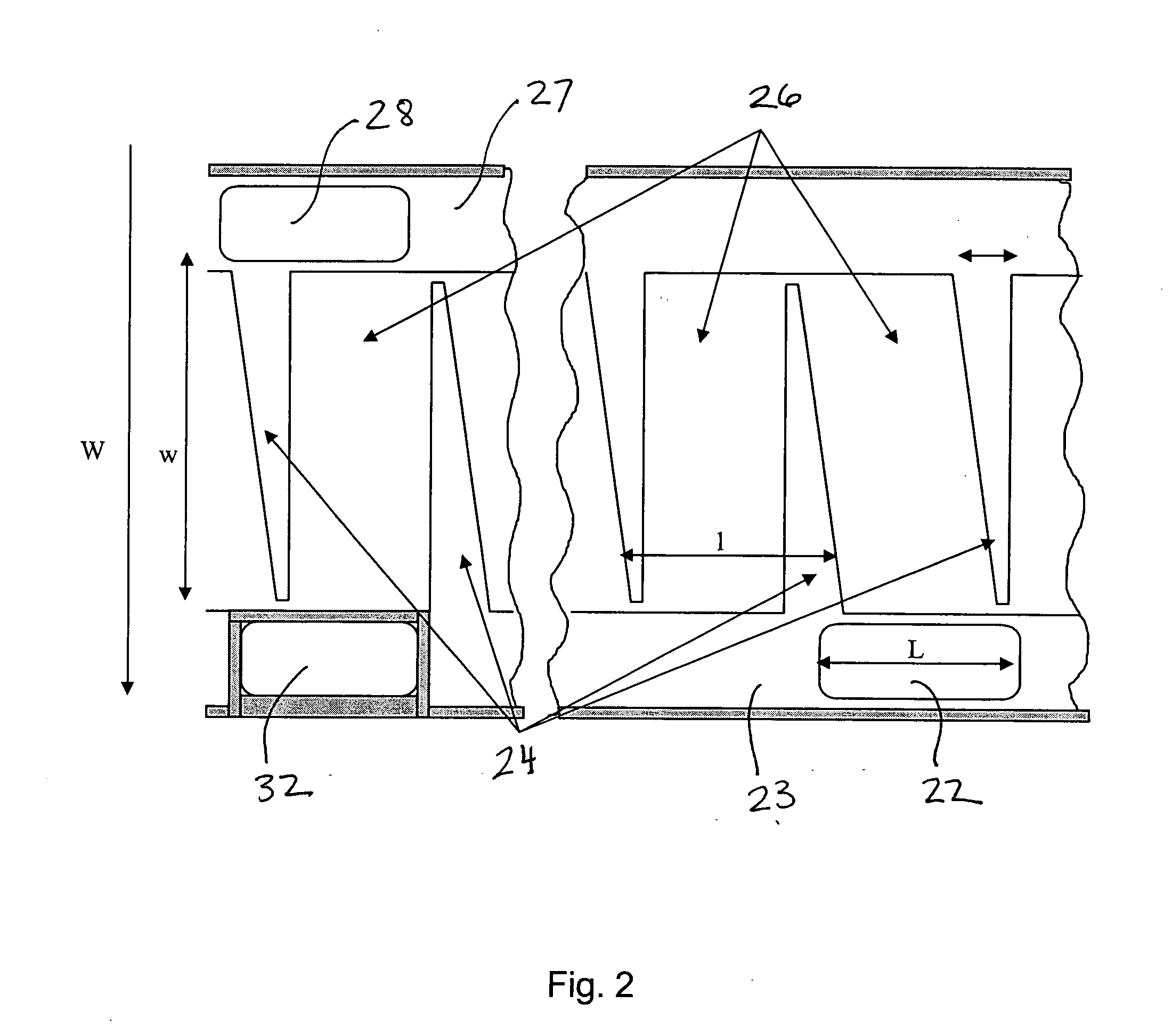Biomimetic 3-dimensional scaffold with metabolic stream separation for bioartificial liver device
a biomimetic and liver technology, applied in the field of bimimetic liver, can solve the problems of poor long-term device performance, not always possible to predict, and none of the cell-containing lads have successfully passed all clinical trials and achieved an fda, and achieve the effect of high degree of 3-dimensional resolution and structur
- Summary
- Abstract
- Description
- Claims
- Application Information
AI Technical Summary
Benefits of technology
Problems solved by technology
Method used
Image
Examples
Embodiment Construction
[0026] A flat sheet of material can be patterned to direct a flow of fluid or gas media within the two in-plane directions. Assembling or stacking multiple sheets in a third dimension is often required when a larger surface area is desirable. In this case, an external pattern is required in order to direct media to every sheet. If the material is flexible enough, it can be rolled into a cylinder as shown in FIG. 1. As illustrated, a roll 100 is formed from a sheet 10 having at least one of its surfaces a pattern of side walls 11 and dividers 12 that produce a flow pattern 14. Openings 16 in the sheet allow fluid to pass between the layers in the roll. There are two approaches to supplying media to the cells. In the first approach, the media is supplied to the OD and is transported primarily in a radial direction, towards the ID. In the second approach, media is supplied to one end of the cylinder and transported longitudinally. The inlet and the outlet manifolds are external to the ...
PUM
| Property | Measurement | Unit |
|---|---|---|
| thick | aaaaa | aaaaa |
| thick | aaaaa | aaaaa |
| thick | aaaaa | aaaaa |
Abstract
Description
Claims
Application Information
 Login to View More
Login to View More - R&D
- Intellectual Property
- Life Sciences
- Materials
- Tech Scout
- Unparalleled Data Quality
- Higher Quality Content
- 60% Fewer Hallucinations
Browse by: Latest US Patents, China's latest patents, Technical Efficacy Thesaurus, Application Domain, Technology Topic, Popular Technical Reports.
© 2025 PatSnap. All rights reserved.Legal|Privacy policy|Modern Slavery Act Transparency Statement|Sitemap|About US| Contact US: help@patsnap.com



